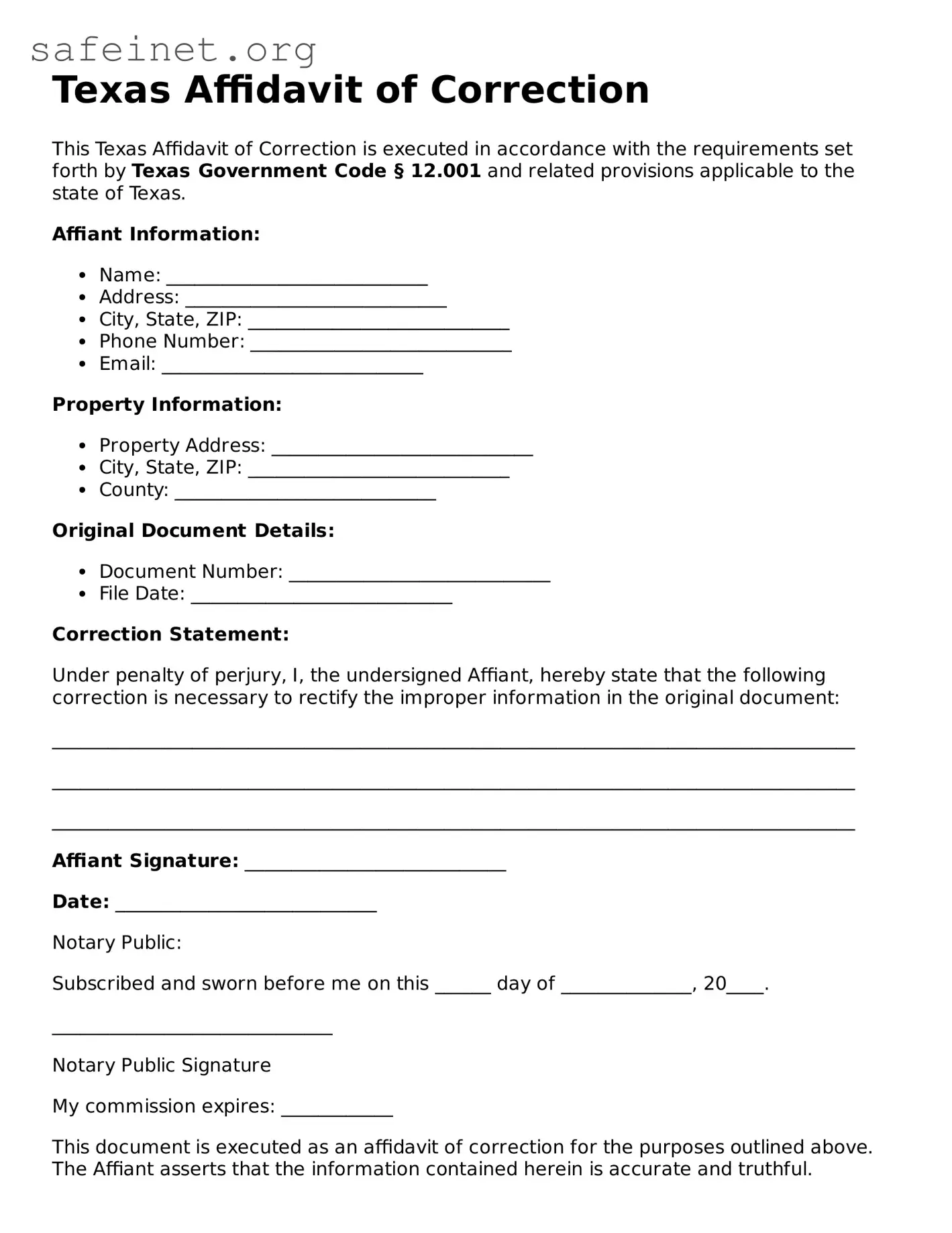Texas Affidavit of Correction
This Texas Affidavit of Correction is executed in accordance with the requirements set forth by Texas Government Code § 12.001 and related provisions applicable to the state of Texas.
Affiant Information:
- Name: ____________________________
- Address: ____________________________
- City, State, ZIP: ____________________________
- Phone Number: ____________________________
- Email: ____________________________
Property Information:
- Property Address: ____________________________
- City, State, ZIP: ____________________________
- County: ____________________________
Original Document Details:
- Document Number: ____________________________
- File Date: ____________________________
Correction Statement:
Under penalty of perjury, I, the undersigned Affiant, hereby state that the following correction is necessary to rectify the improper information in the original document:
______________________________________________________________________________________
______________________________________________________________________________________
______________________________________________________________________________________
Affiant Signature: ____________________________
Date: ____________________________
Notary Public:
Subscribed and sworn before me on this ______ day of ______________, 20____.
______________________________
Notary Public Signature
My commission expires: ____________
This document is executed as an affidavit of correction for the purposes outlined above. The Affiant asserts that the information contained herein is accurate and truthful.
